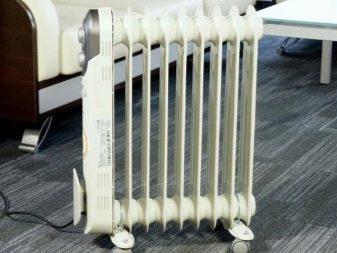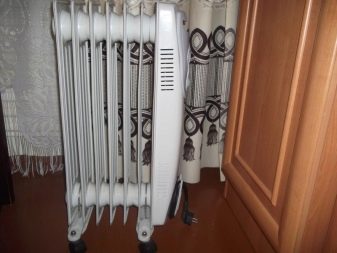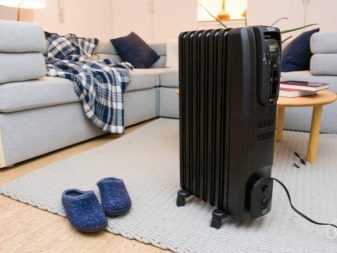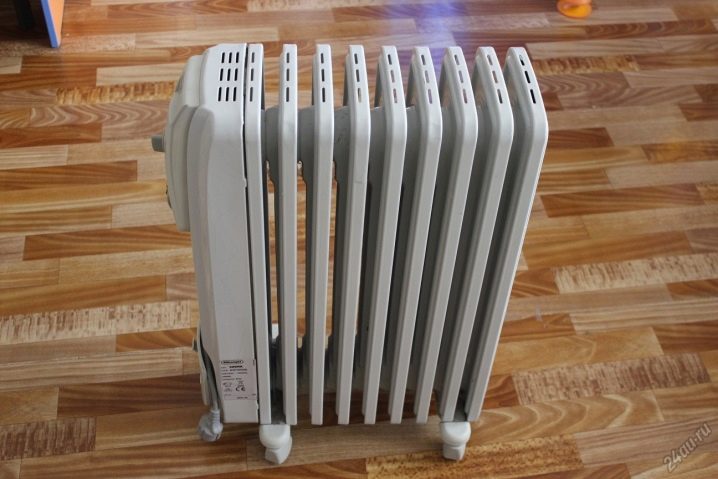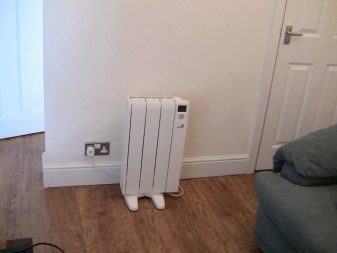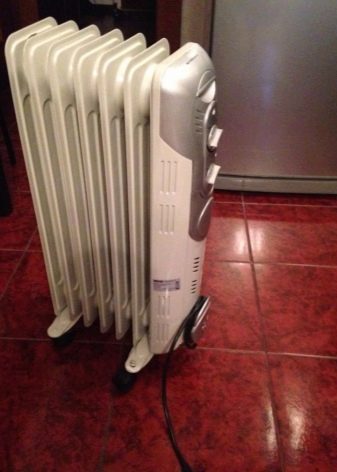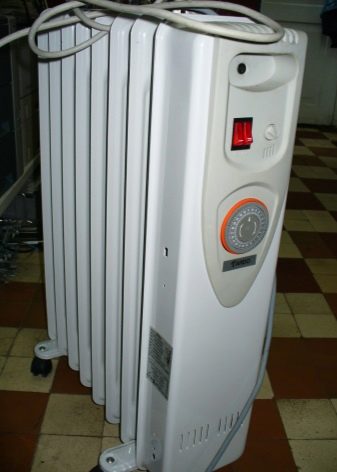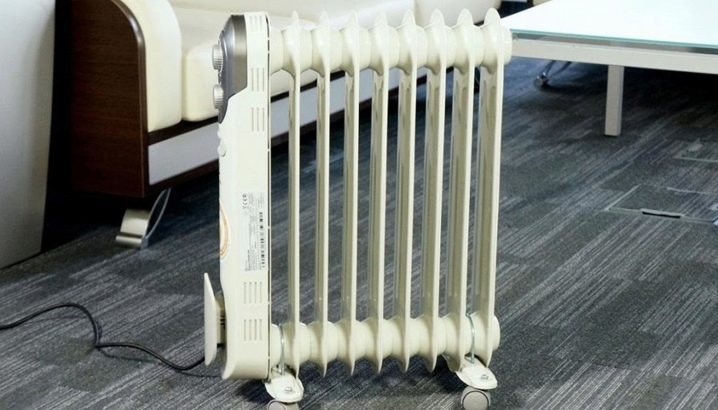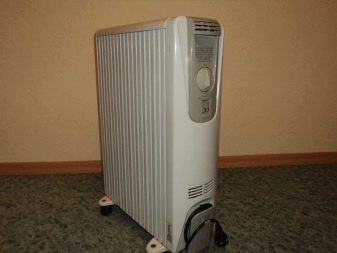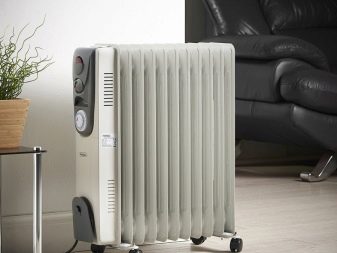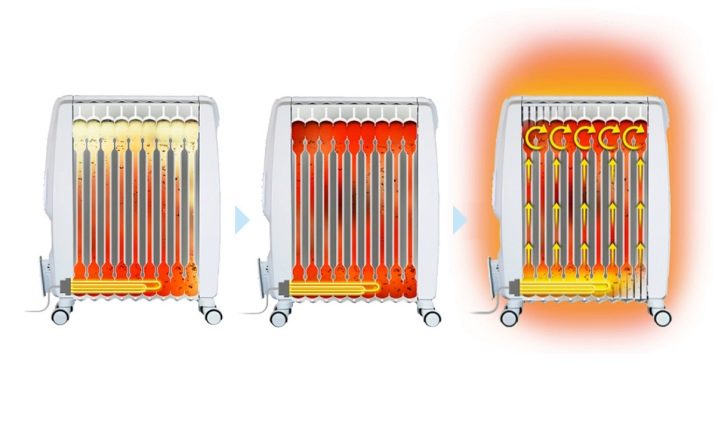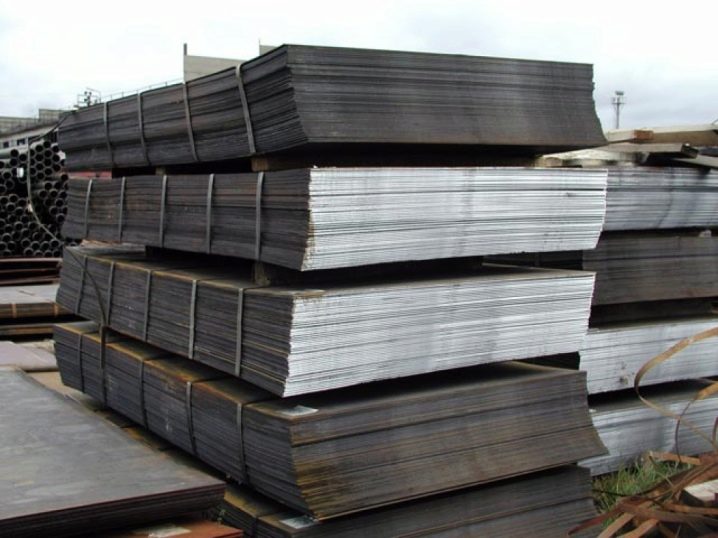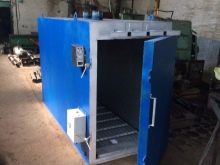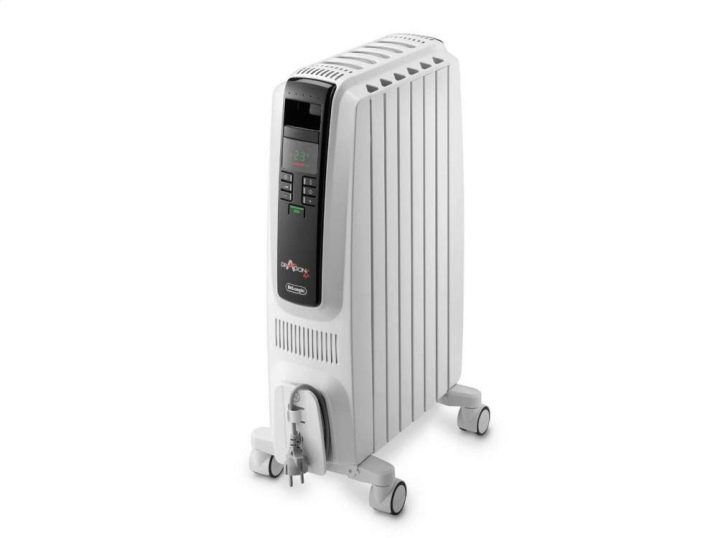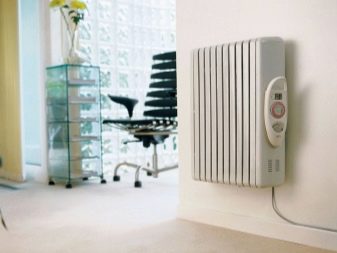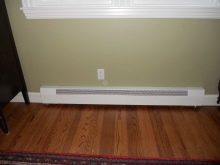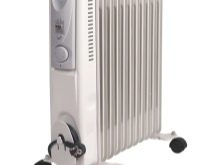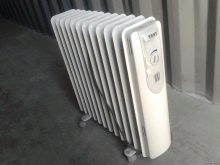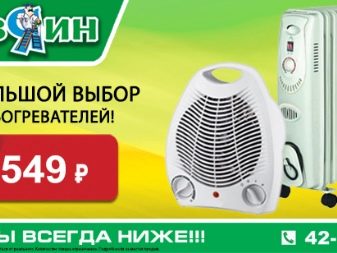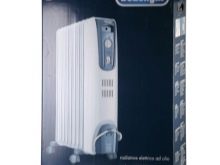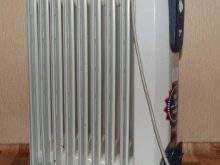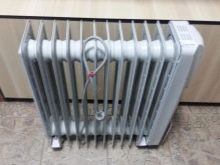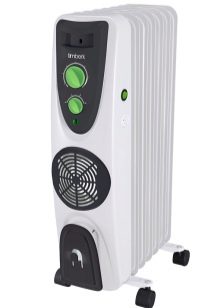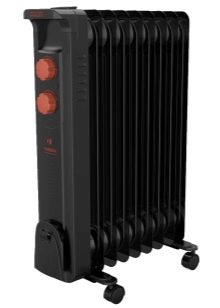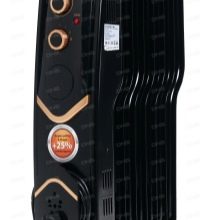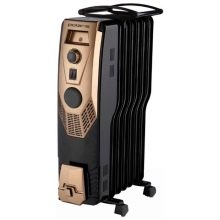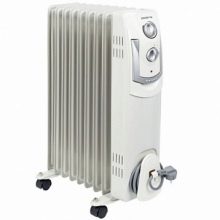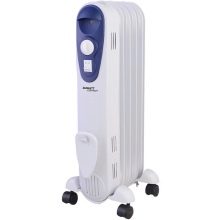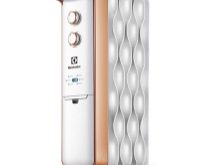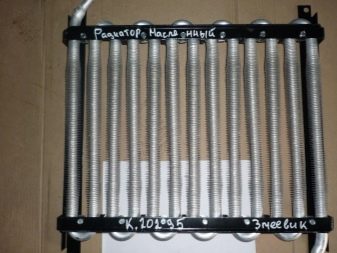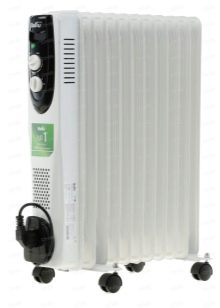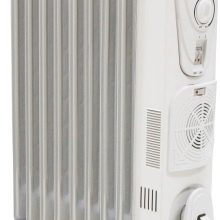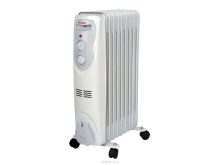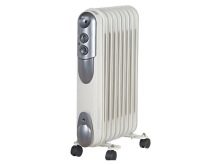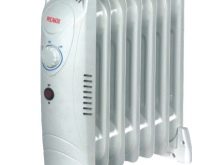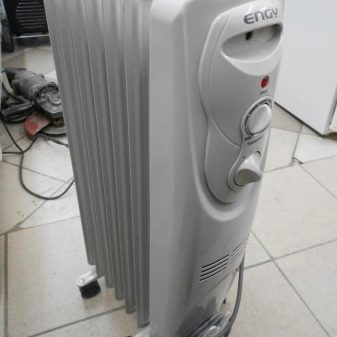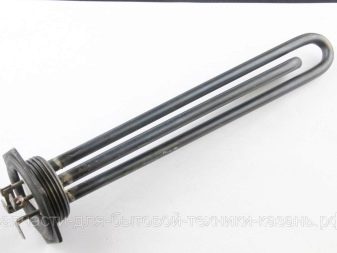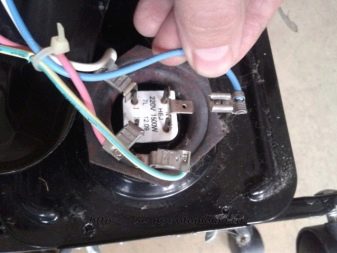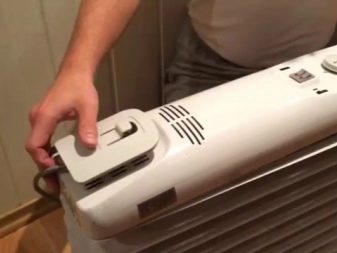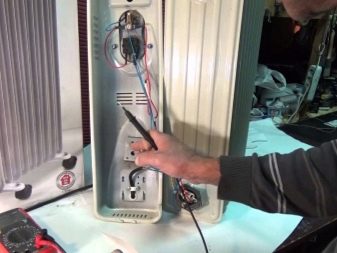Oil radiators: the subtleties of selection
Unfortunately, the heating system installed in the house, sometimes can not provide a comfortable temperature, especially on cold winter days. In this situation, oil coolers equipped with fins will be an excellent solution, since such structures allow you to quickly and efficiently heat the air.
Special features
Strangely enough, the greatest peak of popularity of oil radiators are considered not even severe winters, but the off-season. Someone very long ago came up with the idea that the heating season should begin on October 15, and end on April 15, and the weather does not always “fit” in this framework. Quite often, cooling begins at the beginning of October, and at the end of April it is not uncommon zero temperatures. If the inhabitants of private houses, as well as those who have built a cottage, can turn on heating at any time according to their needs, then the owners of apartments in high-rise buildings do not have this possibility.In order not to freeze and get sick, heaters are used, the best choice among which are oil radiators.
There is another situation where the use of a radiator may become vital. - this is an accident, breakdown of the heating system, which is rarely eliminated in one day. The third need for heaters occurs when stationary batteries have low heat transfer, in this case there is a need to “strengthen” them with an additional source of heat. And, finally, heaters are needed in situations where window and door openings have gaps and all sorts of leaks, the lack of tightness at the same time causes significant heat loss, which has to be compensated. Oil radiators are truly indispensable at a time when the temperature in the room becomes low and completely uncomfortable for adults and especially children. In addition, they are the best solution for villas, garages, construction trailers and other temporary accommodation facilities where there is no heating system.
In recent years, oil radiators have become increasingly popular.It is necessary to understand what constitutes such a construction. Visually, such a device is similar to a multi-compartment battery, where all heating elements and segments are firmly connected to each other and form a single monolithic body. From above it is covered with an anticorrosive composition, due to which the radiator casing is protected from rust, and the total period of use of the heater increases significantly. As the name implies, such a battery is filled with technical oil, which serves as a heat transfer medium. Typically, such installations are equipped with a simple control panel, which contains a mechanism for adjusting the degree of heat. As a rule, in addition there is a handle on the side panel, which is necessary for increasing or decreasing the degree of heating, as well as an indicator that indicates that the device is in working condition.
Oil radiators on the market today may have different capacities. - this parameter is crucial when choosing the appropriate model. For this parameter, all existing modifications range from 0.5 to 3.0 kW.If we take into account that each kilowatt is equal to 10 square meters of floor space, then we can calculate, for example, that a 1.5 kW heater would be sufficient for heating a 15-meter room. This indicator is designed for rooms with a ceiling height of 2.5 meters and the regulatory insulation of residential premises. If conditions are different, then the required power may be different. For small premises, the use of too powerful a source of heat is not only impractical, but also dangerous, but in too spacious rooms, on the contrary, the expected effect will not be.
You can find many advantages of oil radiators, namely:
- they take up little space because they are compact in size;
- most models are equipped with wheels, so the radiators can be easily and quickly moved from place to place, warming up all the rooms in turn;
- the body is made of metal, however, it rarely heats up above +70 degrees, so the risk of burns and injuries is minimal. All work items that are heated to maximum temperatures are located inside the casing;
- oil radiators do not make noise during operation, with the exception of only models, complemented by fans;
- such heating elements do not burn oxygen and do not overdry air, and also do not emit any unpleasant odors, as is often the case with other types of heating devices;
- the installation does not immediately cool down, even after turning it off, it continues to give up its heat to the free space of the room for some time;
- ease of use - all that is needed in order to bring the radiator to working condition is to plug the cord into the socket;
- pretty low cost.
Nothing perfect has yet been invented, and oil radiators are no exception, among the minuses are the following:
- inertia - the oil reaches the temperature necessary for effective heating of the room rather slowly, therefore the room warms up extremely slowly;
- the design is heavy, which is not always convenient, however, the presence of wheels eliminates this defect.
In addition to the standard features, these days you can find models that have many options. For example, air ionization, section heating switch, built-in thermostat, which turns off the heating in case the temperature reaches its critical value.In the more expensive options there is a timer that allows you to set the start time and end time of work. Most modern models have a built-in air humidification system that is turned on in parallel with heating, and individual products are equipped with a heated towel rail. This seemingly far from the most important function, however, is very attractive to housewives, because it allows you to quickly and efficiently dry a freshly washed thing. Well, separately it should be said about the system of protection against splashing - such models are more durable and resistant to external adverse conditions of use.
Important: when handling the oil cooler, extreme care must be taken. Such devices can not be used in the bathroom, shower or other rooms with high levels of humidity. It is categorically unacceptable to contact the "shirt" of the cord and the hot sections of the battery, since in this case the insulating layer may melt and the wire will be exposed. The design can not be "laid" and moved by pulling the wire. It is necessary to store the radiator in a dry heated place.since storage in a shed or on an open balcony can easily disable the device.
Device
The principle of operation of oil radiators of all types is similar. Such a heating device is a special hermetic construction, which includes several sections. Inside of them is a tubular electric heater that heats the oil inside the case. It in turn transfers heat to the hull, and that already heats the entire room. The more fins the radiator has, the more heat it gives to the interior. The great advantage of devices is that they turn off and turn on when they reach critical temperatures.
Radiators are made of ferrous metal with a wall thickness of 0.8–1.0 mm. Directly cutting the main structural elements is carried out on a laser machine, and their bending is performed on bending plants, the very smallest parts are made by stamping. Next, the blanks are connected to each other using extrusion and spot welding. To do this, first drill small holes, which are then attached to each other through nipple connections.Thus, absolute radiator tightness is achieved.
As a rule, heaters are painted with special powder paint and polymerized in furnaces under the influence of high temperatures. Oil use transformer mineral. Inside the case, the heater elements are tightly and hermetically sealed, metal panels with an adjustable thermostat and a switch, which suspend the radiator when it is overheated. The design is equipped with a warm-up intensity switch and an electrical cable is connected. The latest modifications are not equipped with a valve for pouring liquid oil - and this is the main difference between modern radiators from previous models. Nowadays, the oil is poured only in the factory at the time of assembly of the installation.
All radiators dry the air and oil in this sense are no exception. In order to level this unpleasant effect, some manufacturers supplement the devices with removable water tanks, which evaporate during the operation of the device, thus the air is humidified and the indoor climate remains healthy and comfortable for the residents.Separate versions of radiators are closed with a special casing. Most often, they are purchased for installation in the nursery, since the casing provides full protection for the child against the overheated radiator. By the way, you should pay attention to the fact that unscrupulous manufacturers claim that the casing significantly improves the convention, however, this statement does not correspond to reality, in fact the situation is with “yes and vice versa” accuracy - the convention from using the casing is only getting worse.
Most heaters have wheels that make the device easily move from one room to another. They are attached to the body with a special bracket and nuts. After the power supply is turned on and the temperature is set at the required level, the heating element begins to heat up gradually, after that the oil is heated, and the radiator walls are heated from it. The body of the device can warm up to +150 degrees Celsius. According to the laws of physics, the air heated near the heater rises to the ceiling - this phenomenon is called a convention. The radial principle of radiation of thermal energy works for heating sections of the device,since their edges are directed toward each other, which completely eliminates the effect of “fireplace heat”, which is often used in their advertising by the owners of trading floors.
To speed up the spread of heat in the room space, use the built-in fanwhich are equipped with the latest modifications. However, you can use the usual desktop device, with the help of which in the summer they save themselves from excessive heat and heat. To do this, you need to place the fan at a small distance from the heated radiator, and then turn on the mode of rotation of the blades at the very minimum speed. By the way, users note that in this case the effect is often more pronounced than from the built-in fan, since the swing of the blades of a traditional fan is much larger.
Kinds
A wide variety of oil radiators of various forms, functional characteristics and physico-technical properties is presented on the modern market.
Conventionally, they can be divided into several categories.
- Floor radiators are the most popular type of heater. The device is equipped with wheels that allow you to quickly move it from one room to another.Most often, these models have a universal mount, that is, they can be placed either on the floor or mounted to the wall with special fixings.
- Wall-mounted radiators are models suspended from the wall. To do this, use the brackets, as a rule, they are included with the purchase. Such models, when compared with floor-standing versions, have less power and lower heat emission.
- Plinth models are one of the latest developments, a certain kind of wall option. The device is installed near the wall, so that good air circulation becomes possible. This device can be considered an alternative to central heating, since it is used as an independent and full-fledged source of thermal energy.
- Models with a temperature regulator are energy saving models. In order for the device to work for a long time without any interruptions, as well as to become more economical, sometimes thermostats are built into it, which maintain the desired temperature and exclude possible fluctuations in the degree of heating.
- Radiators with a fan - these modifications are complemented by built-in blades, which contribute to a more optimized redistribution of air flow.This is a fairly effective model, it has a convector, however, users note a high level of noise that the device emits during operation.
Manufacturers
Before acquiring oil radiators, looking through the advertising booklet with the intention of finding out who is the manufacturer of a particular product, the consumer will surely come across the phrase: “today, according to the technology of the main company, radiators of this brand are produced in Italy, as well as Israel, Russia and China”. This vague phrase should be translated so that the brand is Italian, the main office is in Israel, assemble installations in China, and sell in Russia. However, there may be many options here, for example, a brand comes from Sweden, an enterprise is registered in Lithuania, and the assembly is made again in Celestial. As they say, the sum does not change from changing the places of the terms, so all sorts of variations on the manufacturer’s theme boil down to just one thing - in 90% of the heaters implemented in our country are made by the Chinese. However, despite this, the heaters of different brands are slightly different from each other.
Delonghi
This is one of the most popular Italian brands, which appeared in our country at the very beginning of the 2000s. Consumers at that time isolated the products of this manufacturer as the highest quality. If we dwell on quantitative parameters, oil heaters are rightfully considered to be leaders in terms of the “climate” in the house. Products of this brand are able to heat rooms up to 75 square meters. m. The power varies from 1100 to 2500 W, the installation is characterized by the characteristic design of the ribs, due to which the room is heated as efficiently as possible. Customer feedback on products of this brand indicates that the Delonghi heats up the premises rather quickly, however, it does not heat up at the same time, so that children can be left in the same room with the device without fear that they will burn their hands.
Timberk
The Timberk radiator comes from Scandinavia, or more precisely, from Sweden, however, as noted above, in this northern country there is only the main office of the company, and production facilities are located in the countries of Southeast Asia. However, this fact does not affect the quality of the oil radiators of this brand.Many users note that in terms of the ratio of heated space to power, the indicator of this brand even exceeds Delonghi, and the price for it is lower. A significant disadvantage that can spoil the overall impression of the device is its thickness, which is uniform for all models with a fan and is 27.5 cm. Thin models are also presented in the manufacturer’s product line, for example, Standard-class products differ in thickness of 12.5 cm However, this option does not have a fan. Some users note that cheap models of this brand emit the smell of plastic and consume quite a lot of electricity.
Polaris
This brand is considered international, manufacturing plants are located in several European countries (Italy), as well as in Russia, Israel and, of course, in China. In our country, there are 12 models of this brand with 7-11 sections, some options are equipped with towel warmers, and the range includes models with fans. This is what makes the model popular with the overwhelming majority of the female population of our country, since it is women who are constantly faced with the problem of quick drying of washed things.Depending on the number of sections, the power of the device is 1.5-2.5 kW, if we are talking about fanless models, and 2.4–2.9 kW - if we consider models with blades. Prices for Polaris oil radiators are fairly affordable, but at the same time, the room heats up very slowly - in 40 minutes of active use, the air temperature rises by no more than 3-4 degrees.
Scarlett
Many of our compatriots believe that this brand belongs to the Chinese - this is not true. In fact, the British company is considered to be the owner of the trademark, however, essentially it changes a lot, since the structures are assembled in the Celestial Empire. In our country, there are about 13 models of radiators of this brand on the market. The main advantages of Scarlett are low cost and easy storage. At the same time, user reviews point out that this is exactly the situation when the “miser pays twice” - the radiators are completely uneconomical, they spend a lot of electricity, besides they significantly dry the air and make noise. As the reviews say, uninterrupted work is possible only in conditions of half power, and when the device is turned on "for the whole", its resource is rather quickly exhausted.
Electrolux
This is the brainchild of Sino-Swedish cooperation.The peculiarity of this brand is the presence of small-sized models of 5 sections, and the dimensions are at least 15–20% smaller than those of competitors. The power of this installation is quite small - from 1 to 2.2 kW.
As well as users allocate products MTZ and Ballu.
How to choose?
To choose the optimal model of the oil cooler, you must consider simple rules.
- Power device. According to current standards for effective heating of 10 square meters of a room with a ceiling height of 2.5 meters, about 1 kW of device power is required. As a rule, manufacturers do not manufacture models with a parameter greater than 3 kW. Therefore, if you want to heat up in the air in a larger area, you should purchase several radiators.
- The number of sections. Today, most construction stores have models, the number of sections in which varies from 5 to 14, while the dependence of heating on their number is direct: the more sections, the greater the degree of heating, however, the power consumption also increases proportionally. The best option is a radiator of 6–8 sections, as a rule, this amount is quite enough to warm a room of medium size.
- The design of the device. When choosing a radiator, special attention should be paid to such options as the number of operating modes, the presence of a temperature controller and a light sensor. It is very important that the system has built-in protection of the device against overheating, which will help protect against quite unpleasant situations. If the device has two or more modes of operation, the heating temperature can be adjusted independently, which significantly optimizes the cost of electricity.
- Timer allows you to plan on and off the device, thanks to this you can "turn on" the device when the household is still on the way to the house and warm the room to return all family members from work, from school or kindergarten.
- Built-in air humidifier. It is no secret that the air in the cold season becomes quite dry, and the use of a radiator dries it even more. The humidifier works in parallel with the heating, thus, the humidity level in the residential premises is maintained at the standard level.
It is necessary to focus attention on several important aspects, namely:
- you need to try to get such models of the heater, where the sections are narrow, because they heat up much faster than the thick ones and, accordingly, give their heat to the room better.If you want to heat a fairly spacious room, it is better to increase the number of such sections;
- Overall sections, as a rule, reach the required temperature for a very long time, and cool too slowly, thanks to which additional heat can be obtained, however, this significantly increases the cost of electricity;
- if the installation is lightweight, but it is large in size, this may indicate that the manufacturer saved a lot on materials, which may not have the best effect on the quality of such an instrument;
- warm color heaters are considered to give off heat to the environment much better.
Repairs
There are situations when the warranty period of repair has already expired, and the radiator suddenly ceased to function, you should not get upset - most of the device failures can be fixed with your own hands, since the electrical circuit of such products is not particularly complex. The oil device is a monolithic mechanism in which the body is attached to the electrical unit by means of rolling. However, this is only a deceptive appearance, you must try to find the phrase "do not cover."Immediately below it are small screws, by means of which the metal cover is held on the metal case. They should be opened, however, it should be borne in mind that the lid will not unscrew immediately - an elastic spring is attached at the bottom, it holds it, so you need to remove the spring and only then remove the lid.
Now about the heating element, which is hermetically sealed - this is done intentionally, so the manufacturers protect overly curious users from the risks of electrical injuries. Such elements can work for decades, so it makes no sense to touch them. If the heating element fails, it is worth thinking about purchasing a new heating device, since it is impossible to repair such a breakdown at home, moreover, even in professional services, it is quite difficult to achieve absolute tightness, the result of this initiative is constantly leaking oil. But to treat the elements of the basic connection with an alcohol solution under the force of all, since they are made in the form of small terminals, so there is no problem to disconnect them, process them and reverse connection.
Equally, this refers to the replacement of the main parts of the power supply, it is also quite problematic to repair them on its own, without having knowledge in electrical engineering. The only way out in the event of a breakdown will be the complete replacement of the failed elements. They are attached to the body with screws and brackets. It is not difficult to remove them, however, it is very important not to confuse the wires during such work, since its effectiveness depends on the electrical circuit. Many homemade craftsmen are trying to independently repair the tank.
Of course, it is not recommended to do this, but if there is confidence in your abilities, then you should try to work in the following sequence:
- First you need to drain the oil, it is very important to remember its grade, since during the repair work a small part of the oil will leak out and it will have to be replenished to the standard level, while it is absolutely not allowed to mix mineral and synthetic oils;
- The body of the heating device is usually either welded or soldered, and the first option is more effective, however, not every home craftsman has the necessary tools and welding skills, therefore in home workshops they often use soldering.It is worth noting that when carrying out this work, braze, silver or copper-phosphorus solder should be used, the use of tin is strictly prohibited. At the time of the soldering process, it is necessary to fill the tank with water, and after the repair is over it is drained and the tank is dried;
- The oil in its original form is not poured into the tank, it is first evaporated at a temperature of + 80–90 degrees, and it is important not to overheat the above level, otherwise the oil will oxidize;
- minor damage to the housing can be temporarily patched with a threaded joint, but this option is not suitable as permanent.
Obviously, you can repair the radiator with your own hands, but this requires special tools, skills and good knowledge in electrical engineering. Not every master can boast that meets these strict criteria, so it is better to think about the complete replacement of a heater that has failed, especially since it serves for quite a long time, and its cost is quite democratic.
All you need to know when choosing a heater, see this video.

